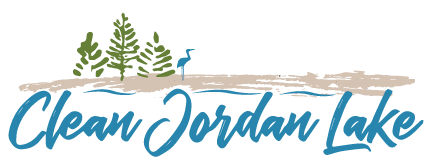Trash Spots and Test Plots: CJL Summer Intern
IMG_0955 (1)
The heat of the day finds its way through the trees, pushing warmly on my back. I stand up and place an empty Sprite bottle into the orange trash bag in my left hand. Waving my stick for spiderwebs, I advance towards the tire lying in front of me. It has been filled with dirt and small plants.
Moving quickly, I reach into the dirt and flip the tire over. My heart jumps and I yell out as a spider scurries away, with a body the size of a grape. I am feeling extra-sensitive to creepy crawlers in my thirsty and overheated daze. Looking around at the trees I see the four orange pieces of tape marking the rectangle I have just cleared of trash.
After the next significant rainfall, Clean Jordan Lake will send someone back to measure the amount of new trash. This provides another useful way to measure the trash accumulation rate. The data will also be helpful when considering the design of a possible trash trap upstream. A trash trap on the Haw River would prevent the bulk of the trash from reaching the lake, as most of it comes from the watershed. Knowing the accumulation rate helps approximate the necessary capacity for one of these potential devices.
IMG_0958
My first trash pickup was done at Stinking Creek, which was full of those large spiders and also a very difficult place to navigate. I even began picking up trash at the wrong spot and had to conduct another pickup in the correct location. Thankfully I had Dr.DiGiano’s GPS to follow the waypoints in and safely out of the forest.
IMG_0963 (1)
The next day, I set up trash test plots at two different spots on Wilderness Island and one plot on New Hope Overlook. These locations are best reached by kayak. The weather was gorgeous and I enjoyed several scenic rides across the water. Each test plot was 200-500 sq ft. and usually held enough trash for two full bags.
I found various interesting items, ranging from the never-ending supply of discarded bottles to old lacrosse balls and odd toys. The winner for largest item was a rusty refrigerator frame that had somehow made its way onto Wilderness Island despite being heavy and full of holes. Most likely, it arrived during the heavy rains of December and January because this same area had been cleared of trash by CJL volunteers in September 2015.
When I finally strapped the kayak to the roof of my car, the sun was already ducking behind the trees. I felt accomplished and had learned a bit about patience and fortitude during my adventures. Eight more bags of trash left the shoreline of Jordan Lake, with the goal of preventing thousands more.
****************************************
Luke Heffernan, Summer Intern for Clean Jordan Lake, supported by grant from REI



